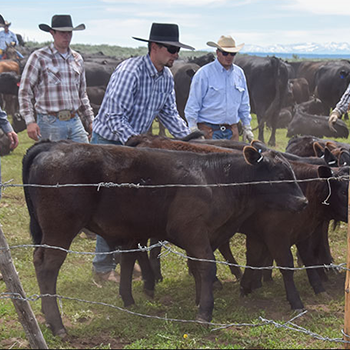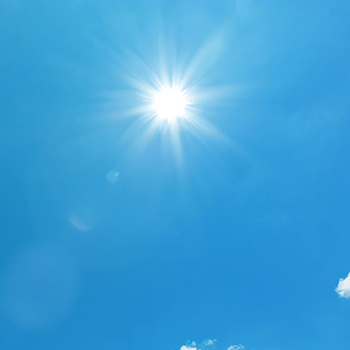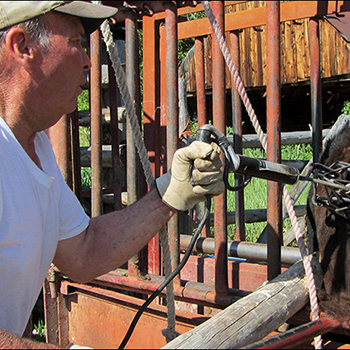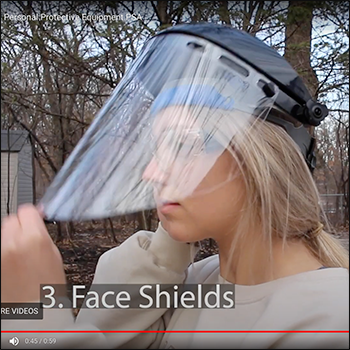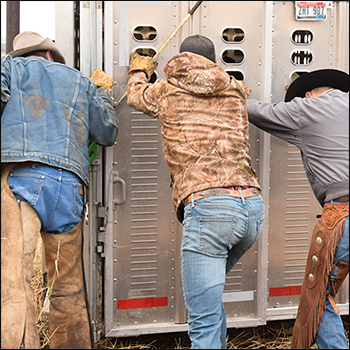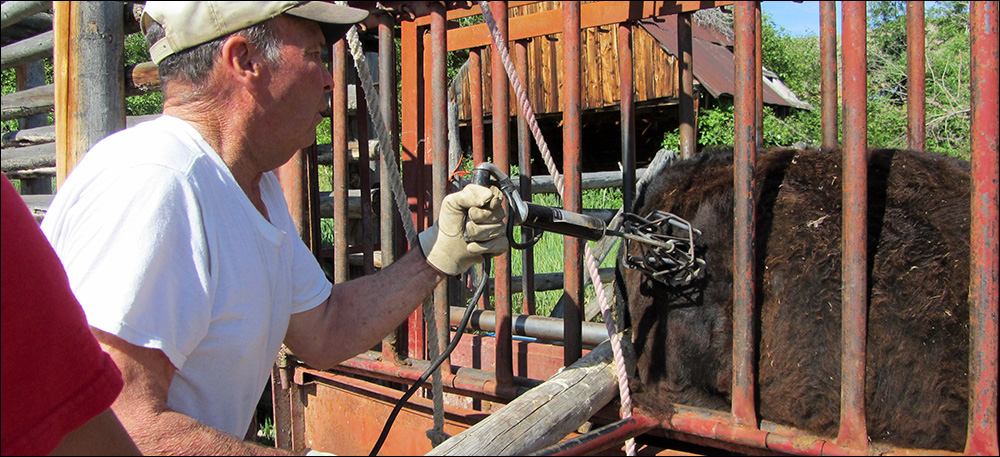
Four Ways to Stay Safe When Working Cattle
Veterinarian gives safety considerations for before and while working cattle.
Large animals and unpredictable situations can certainly lead to accidents. Accidents happen, but it pays to think ahead and avoid putting yourself into a risky situation.
Most cattle herds are gathered and worked for branding, vaccinating, pregnancy testing, weaning and other necessary management tasks. Many cattle are put through the chute twice or more annually. It is important to make sure these cattle-working tasks are accomplished smoothly and safely for the cattle and for the safety of the crew.
Nora Schrag, clinical assistant professor in Kansas State University’s College of Veterinary Medicine, recommends walking through and checking the facilities you’ll be using to hold, sort and restrain cattle.
“Be thinking in terms of the people working around this facility; take note of anything that might be dangerous. Many set-ups use pipes behind animals in the chute alleyway to keep them from backing up. Notice the way gates swing and the directions the levers go. It depends on what kind of squeeze chute you have. If you are standing in the wrong spot when an animal is released, or your head is in the wrong place, you may get hurt. Make sure that you and your crew — especially if some people aren’t used to working around cattle, or new to your facility — know about the danger areas,” she says.
In your walk-through, you might see something that was fine the last time you worked cattle, but it may not hold up today.
“Things change. These facilities are out in the weather, we use them, cattle bounce against things, and sometimes it’s not obvious where it broke the last time. Then an animal hits it again, and it’s very obvious. Pay attention to these things at the start, and the whole time you are working cattle. Keep facility functionality in mind,” she recommends.
It’s a good idea to have some human safety reminders when working cattle. The more people involved, the more complicated that can be. More confusion can happen if there are several people doing things to make a task go faster, which leads to needle sticks or accidents, Schrag warns.
“I sometimes have students helping who are inexperienced,” she explains, “and I always stress that they need to be aware of every person and every animal around them. This is wise, even for people who are very experienced. Keep safety precautions in mind.”
Practical tips
- 1. When refilling or holding a syringe, always keep your elbows down at your sides. Then if someone walks past you, they’re not as likely to bump your elbow and bump your hand, she explains.
- 2. If you are handling syringes, one of the dangers is accidentally poking yourself or someone else. Most vaccines aren’t dangerous to humans, but blackleg can cause a serious inflammatory reaction, she warns. Avoiding accidental needle pokes should be high priority. Keep your elbows at your sides, and if you are holding a bottle to refill your syringe, stick out one finger and touch your other arm for stability and steadiness, she says. Then if someone bumps you, the needle won’t jump into your hand. You already have your hands locked together and braced. Thus, when you are reaching out in front of you with both hands in the air, your elbows are tight and one hand is touching the hand holding the bottle already.
- 3. When working cattle in a chute, always reach over rather than through, when possible, she recommends. If you are reaching through, be aware of what you and the animal are doing. Be ready to pull back if the animal moves. Any time you can open a bar instead of reaching through is preferable. The animal may lunge or jump and catch your hand, wrist or arm between it and the bar. “Even people who have been working around chutes a long time sometimes get hurt,” she says. “Anything you can do to minimize situations where your arm could get pinched will help.”
- 4. Think ahead to what might possibly happen. It’s all about trying to predict problems rather than helplessly watching them happen. It helps if the people doing the vaccinating have had some experience and know the risks, she says.
Editor’s note: Heather Smith Thomas is a cattlewoman and freelance writer from Salmon, Idaho.
